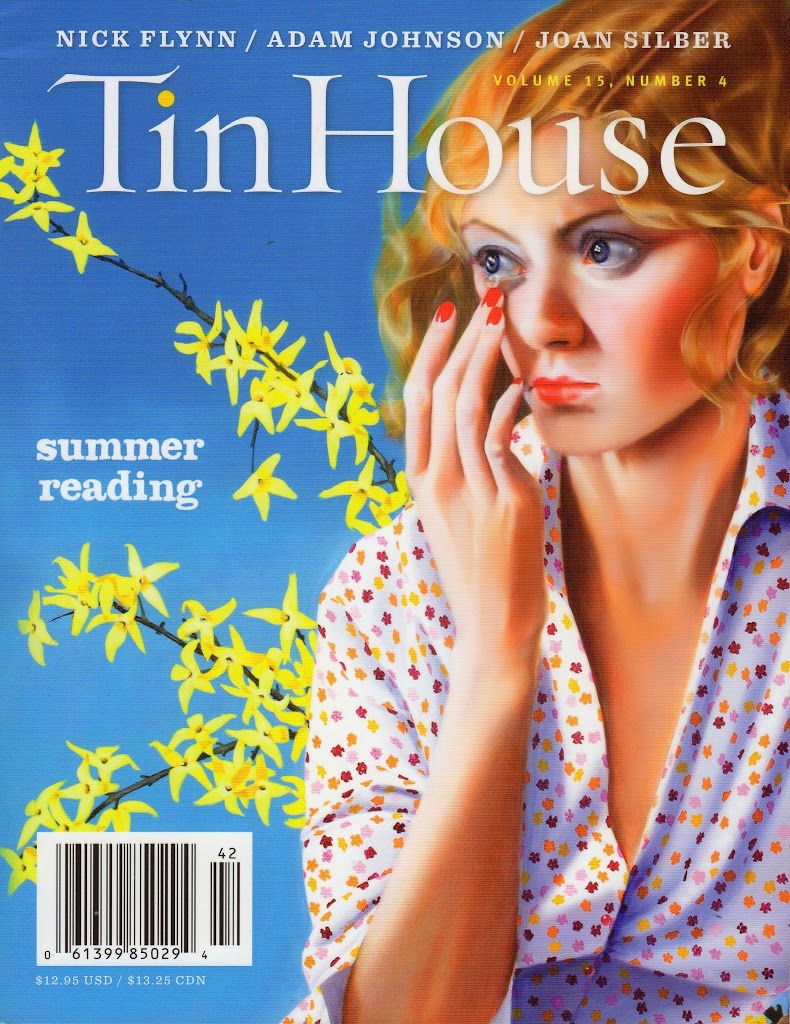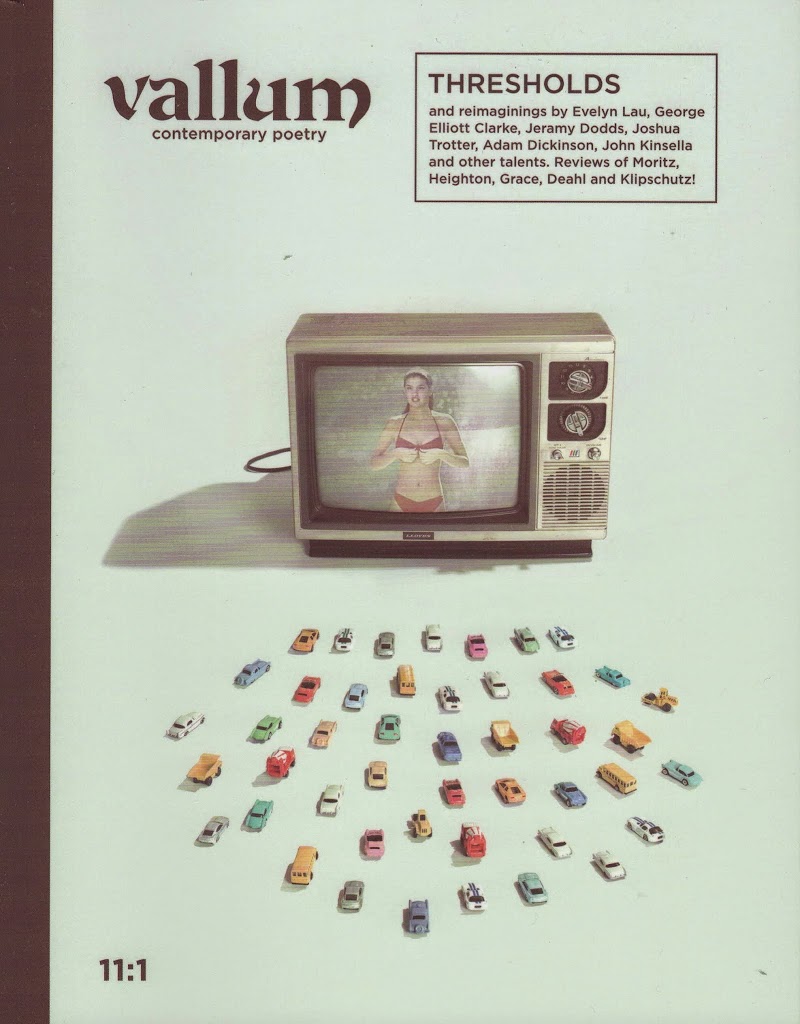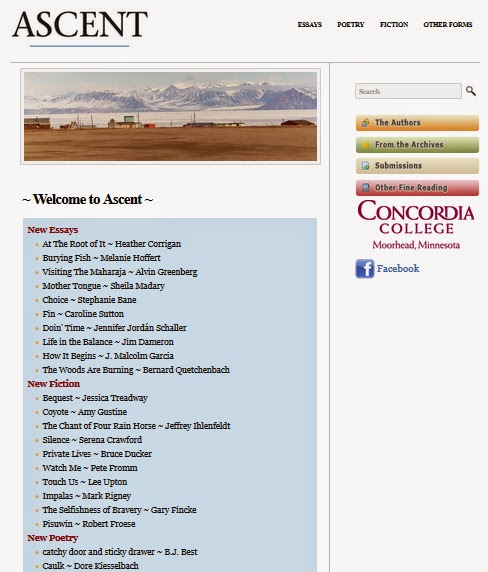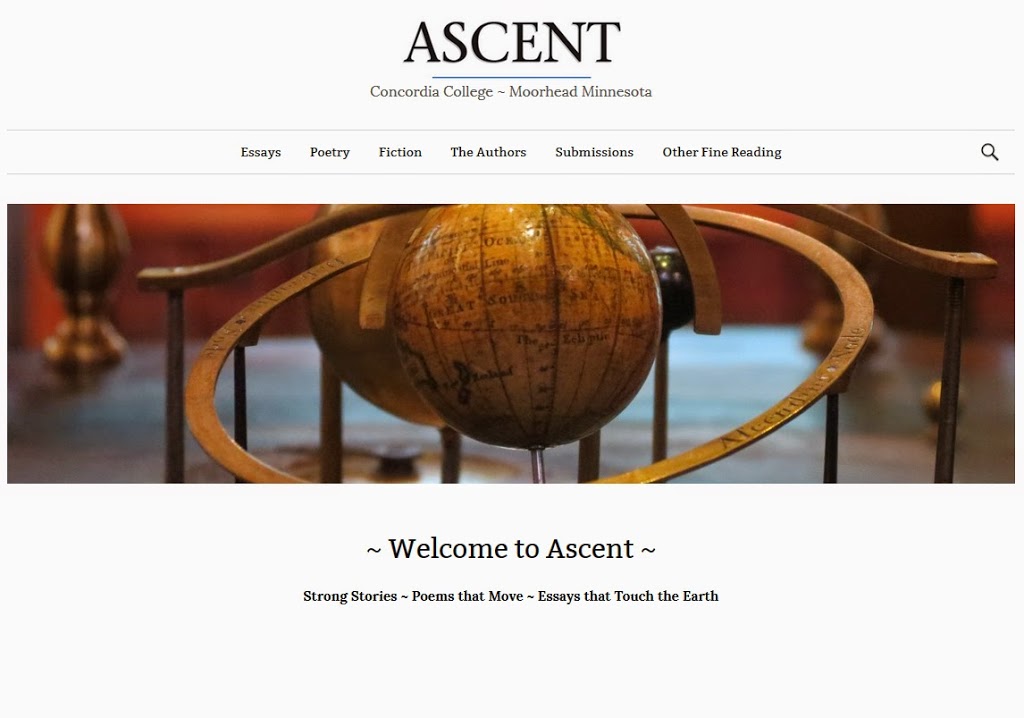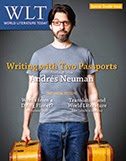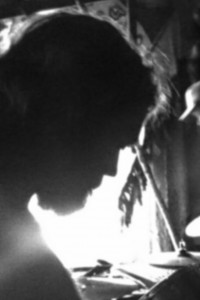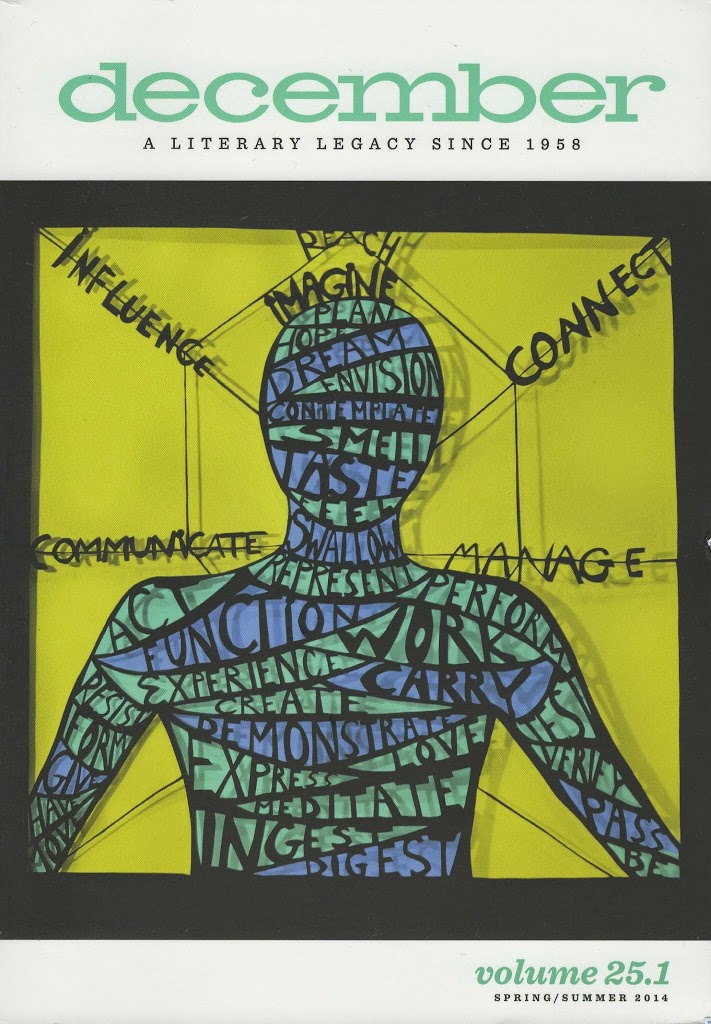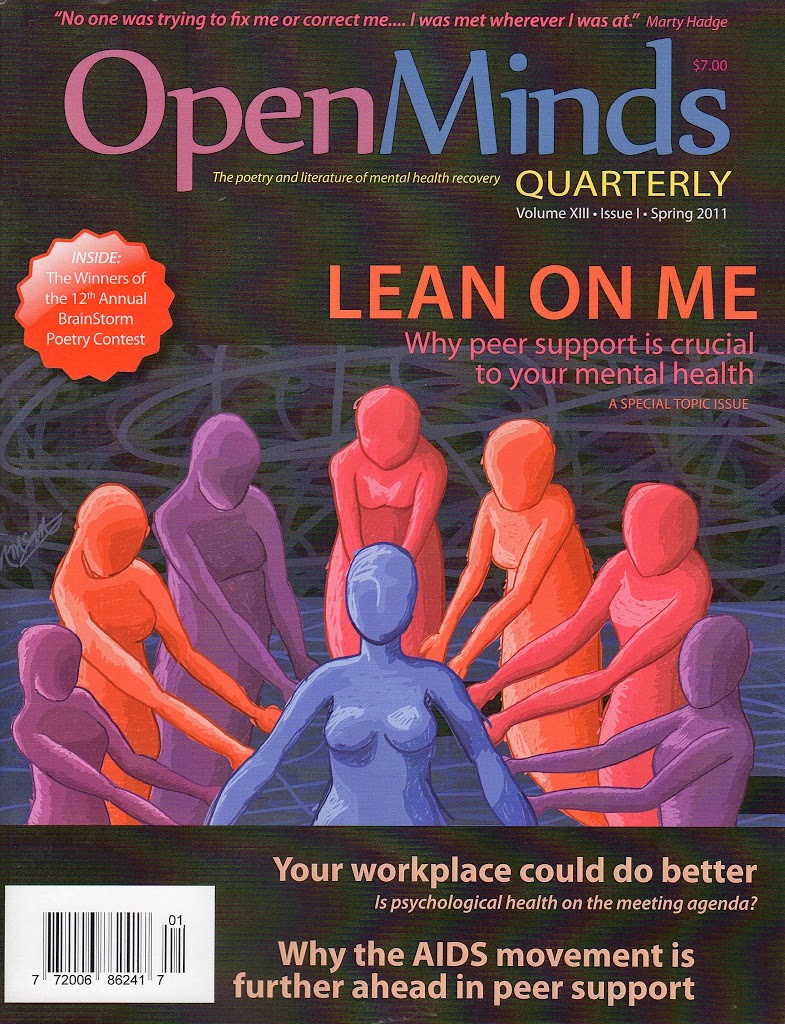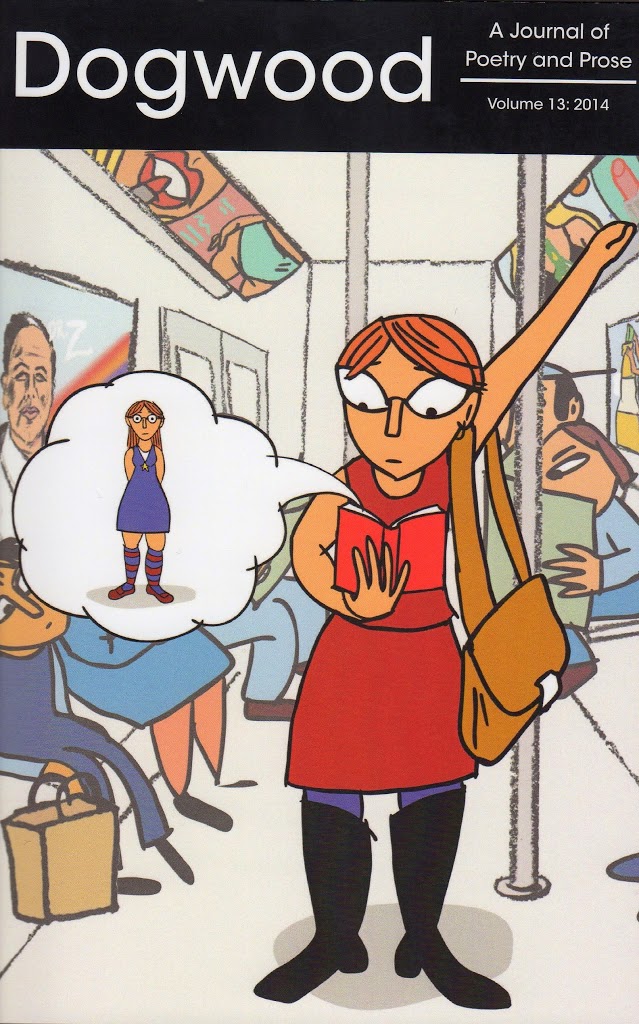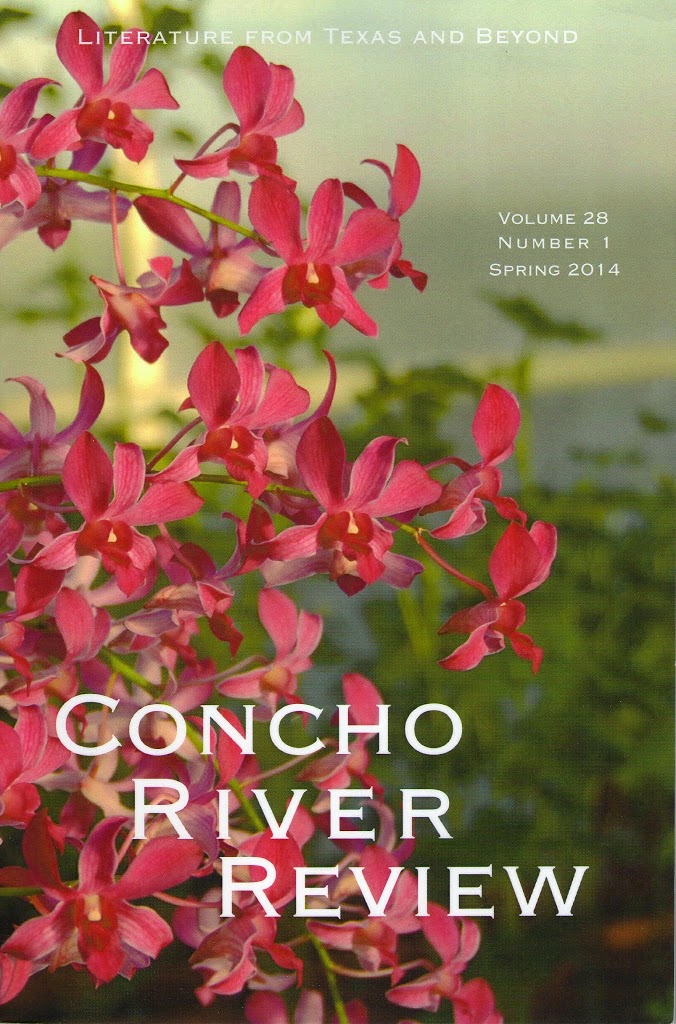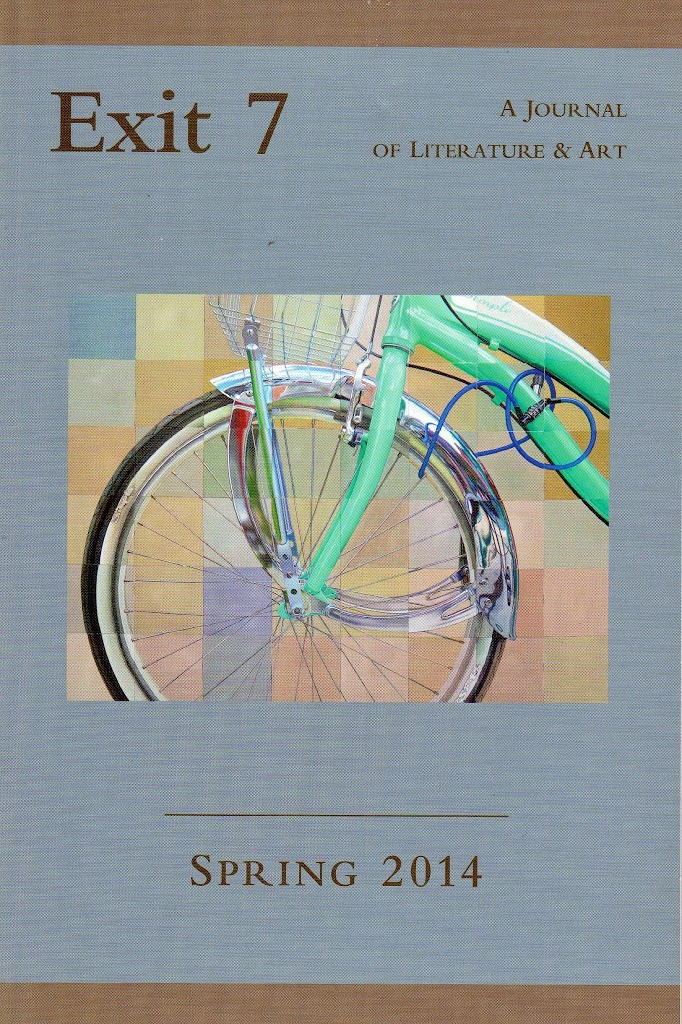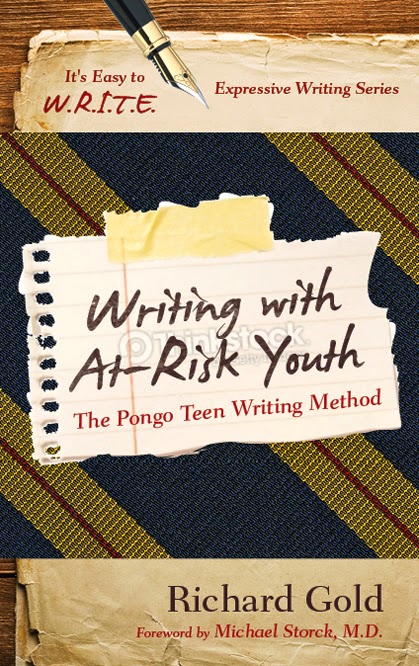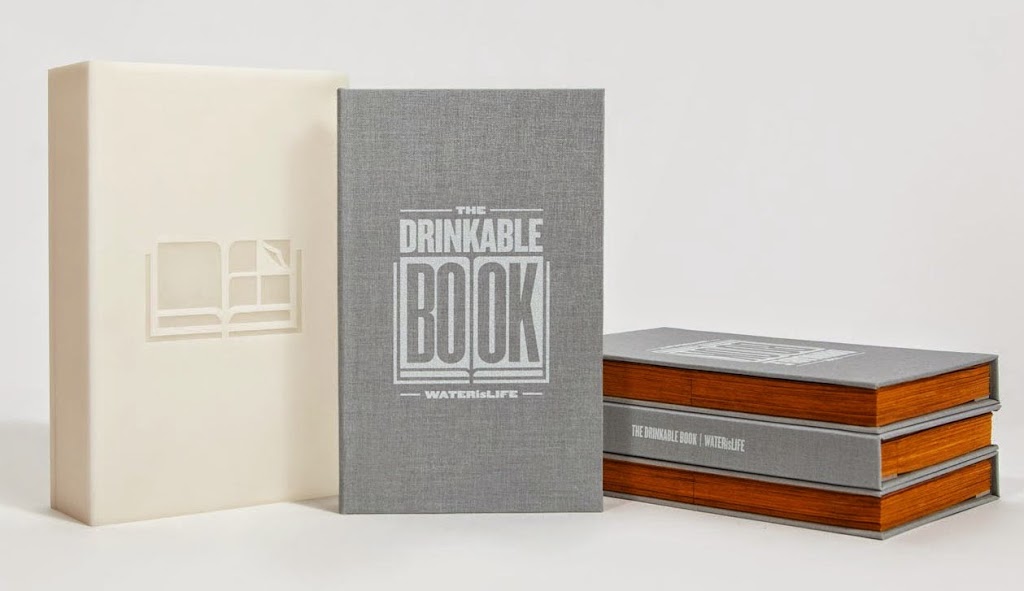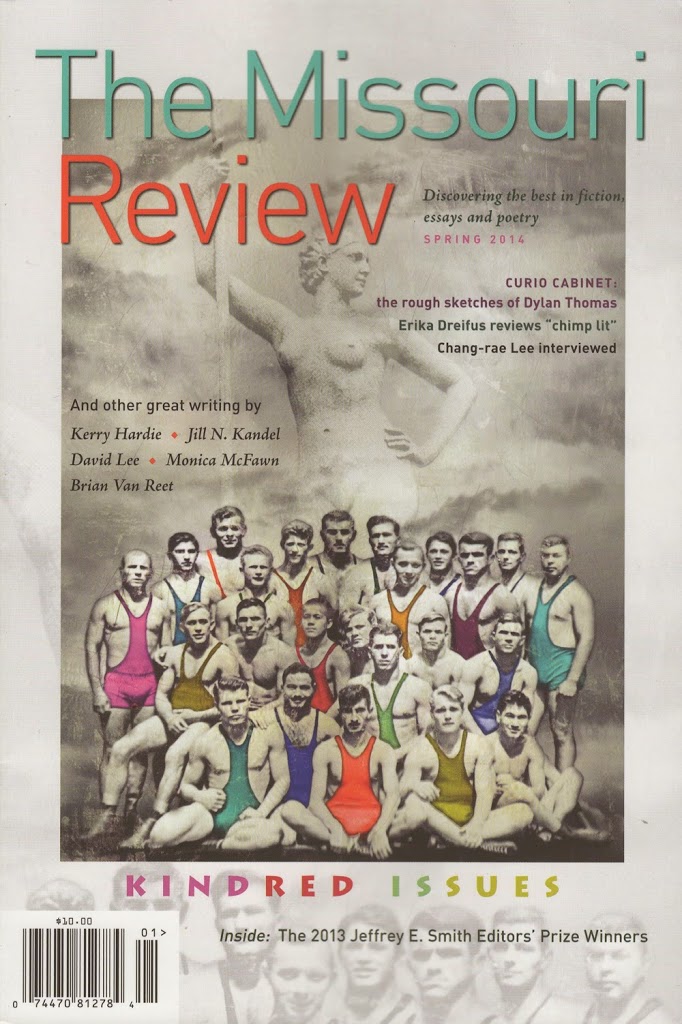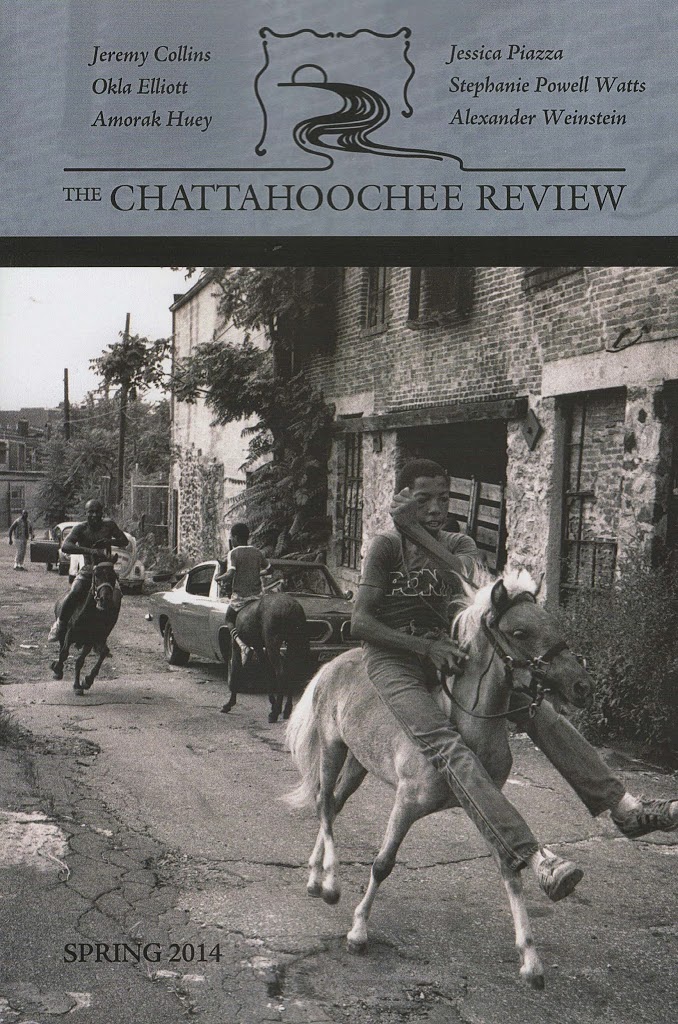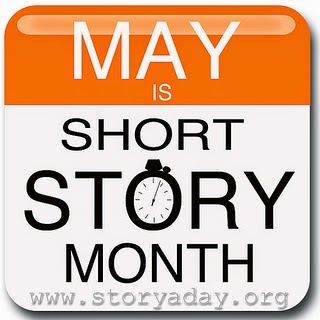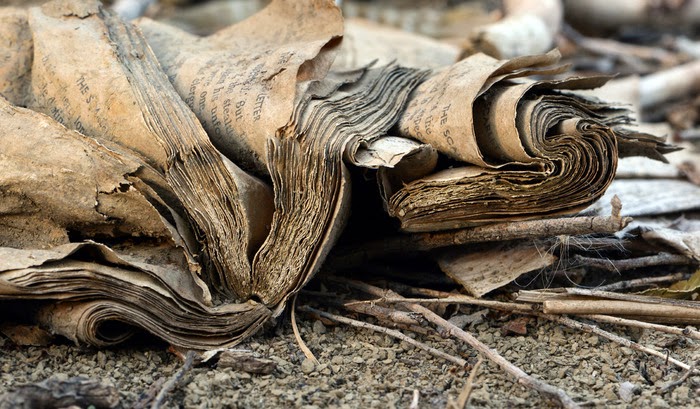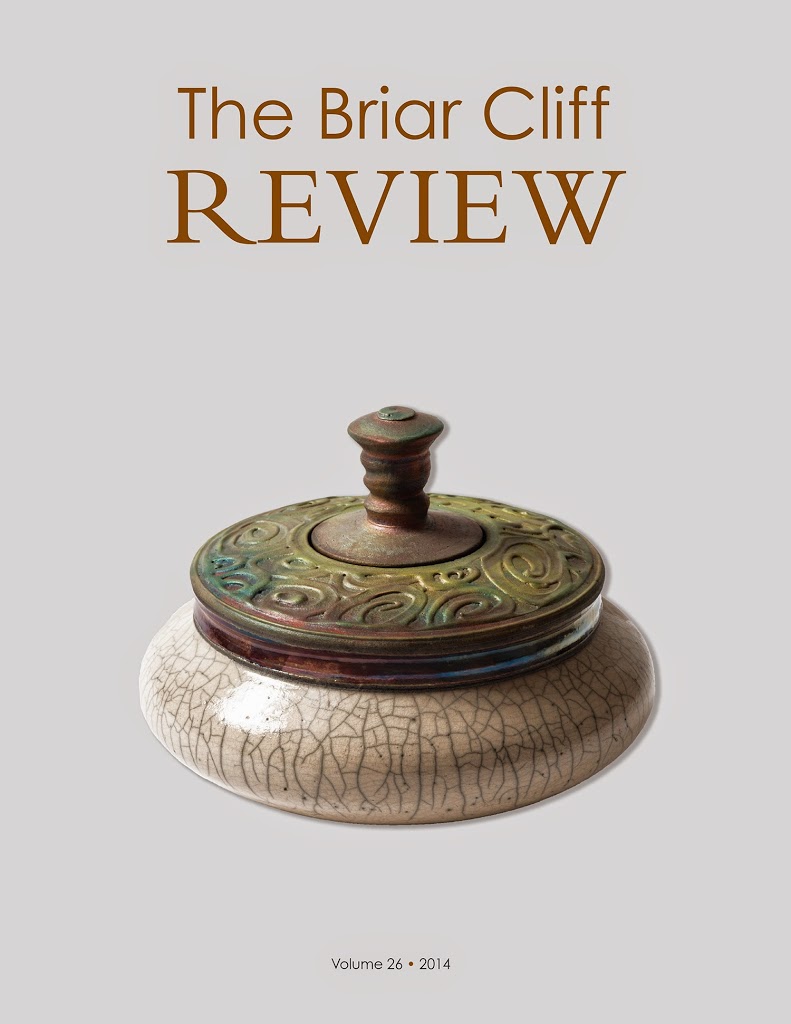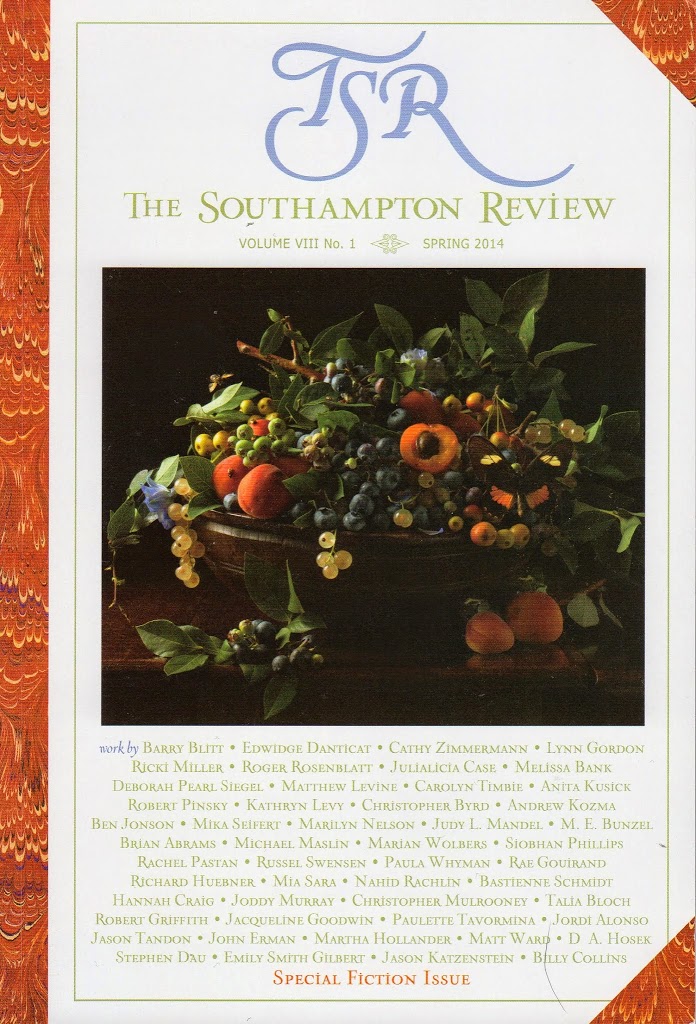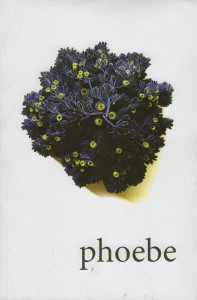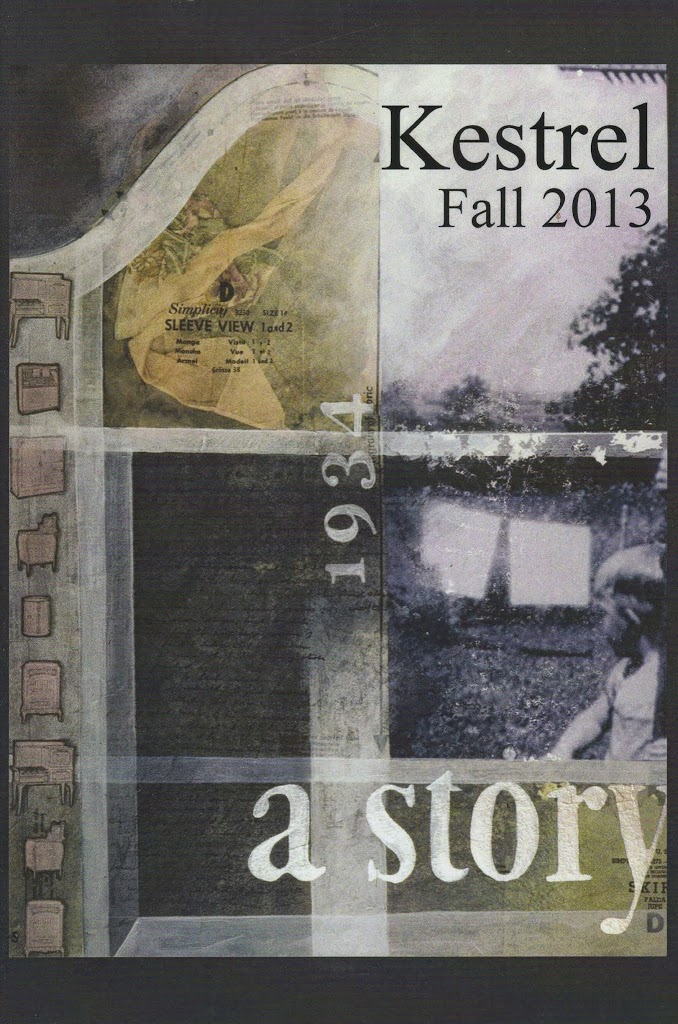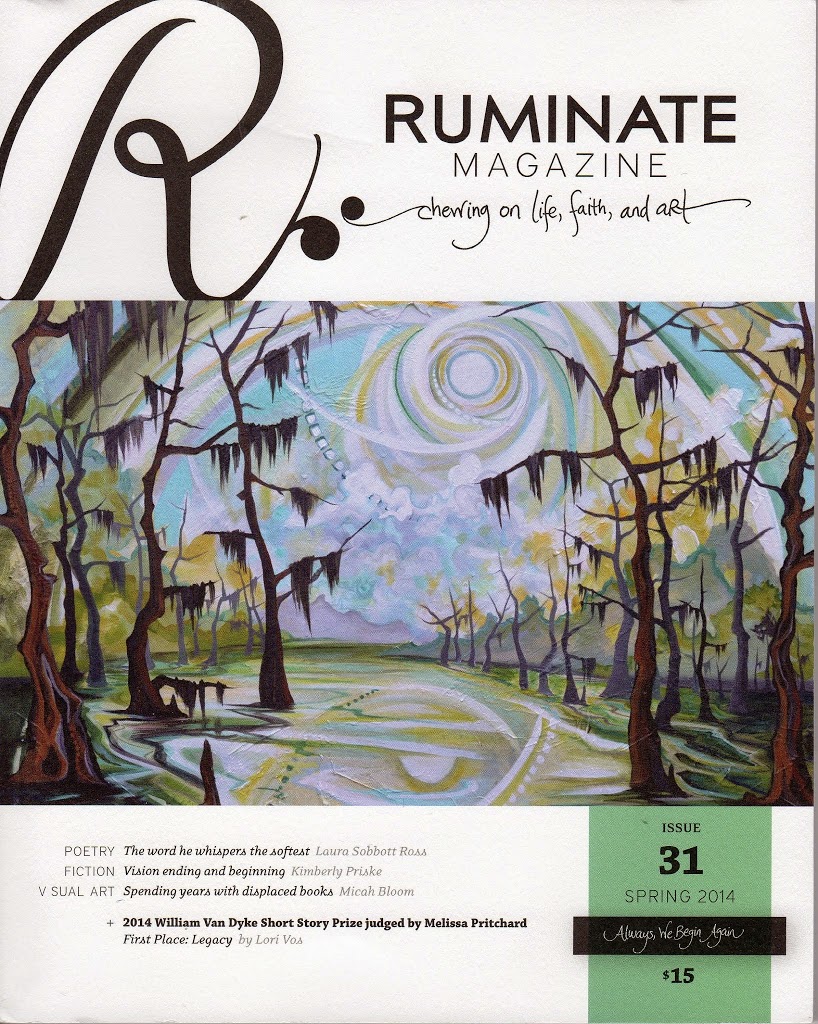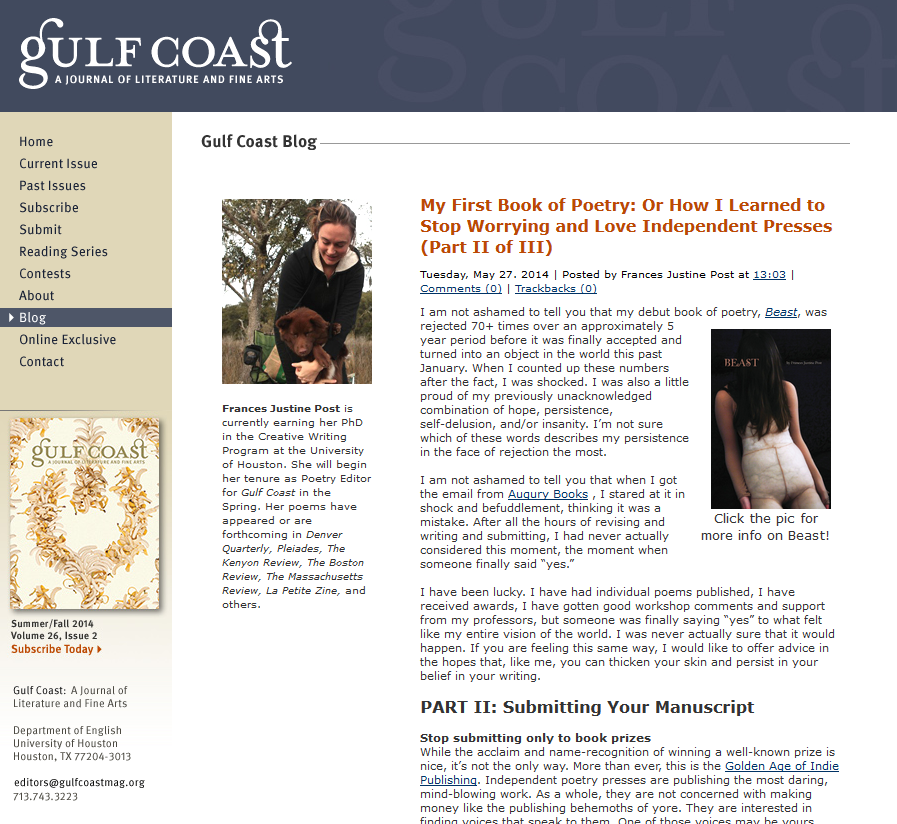 In a second post in her series “My First Book of Poetry: Or How I Learned to Stop Worrying and Love Independent Presses,” one of Gulf Coast‘s poetry editors, Frances Justine Post writes advice on submitting your manuscript to small presses on the magazine’s blog. “Independent poetry presses are publishing the most daring, mind-blowing work,” she writes. “As a whole, they are not concerned with making money like the publishing behemoths of yore. They are interested in finding voices that speak to them. One of those voices may be yours”
In a second post in her series “My First Book of Poetry: Or How I Learned to Stop Worrying and Love Independent Presses,” one of Gulf Coast‘s poetry editors, Frances Justine Post writes advice on submitting your manuscript to small presses on the magazine’s blog. “Independent poetry presses are publishing the most daring, mind-blowing work,” she writes. “As a whole, they are not concerned with making money like the publishing behemoths of yore. They are interested in finding voices that speak to them. One of those voices may be yours”
She also suggests submitting during an open call instead of for a book contest. The publishers will select their favorites, but when it comes down to it, the final judge makes the decision. It may not be the publisher’s top choice, but they support it. However, if you submit during an open submission, you’ll know that they are backing your book one hundred percent. “They have chosen you because they believe in you,” she writes. “In my experience, this makes all the difference. They want your voice in the world, so they will work really hard to make that happen.”
In the rest of the blog post, she offers more advice. And in the post before that, she discusses putting your poetry manuscript together. There is also promise of part III. Read Gulf Coast’s blog here.

